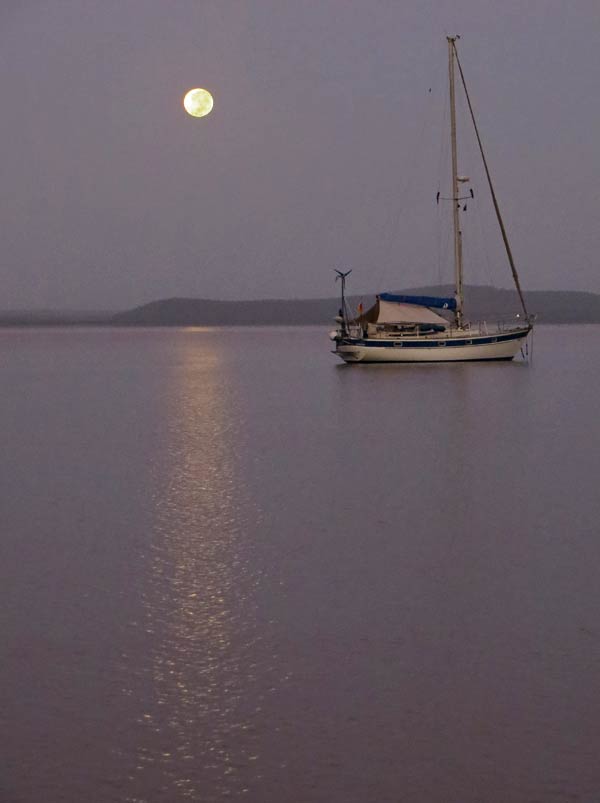March 2, 2015
Here’s 38,000 words…
Click to enlarge any picture above.
While staying in Coff’s Harbour, we rented a car and drove to Dorrigo National Park. Here’s where these were taken. . .
Wow, wow, wow!
Cyndi and Rich aboard Legacy
March 6, 2015
This morning, as the moon sets, we find ourselves in Port Stephens, NSW.

Here’s how we got here…
The above is a fully-functional google map. Zoom, pan and play ’till your heart’s content.
We’ll hang out here in Port Stephens for a few days and when the wind goes north again, we’ll start south to Sydney Harbor (with stops at Newcastle and Pittwater).

March 5 2015
Dear new cruiser just about to set out,
Might I suggest you bring extra flags? They don’t last all that long, even the ones look well made. This is our second in three years and some might say we’re due for a new one.
(I really don’t understand this, but it seems that U.S. flags are kind of hard to find in Australia and New Zealand. What gives? Doesn’t everyone carry U.S. flags? Leaders of the free world and all 😉 )
And not extra of just your home country flag but extras for those countries where you might spend a couple of cyclone seasons or a lot of time. We’re on our second New Zealand and Fiji flags.
I’d really like plastic flags. Maybe just a piece of thin plastic with a nice, colored sticker of the flag on each side. When it fades, peel off the sticker or just paste a new one over the old. It might rattle less in a breeze, and would stay fully unfurled even with no wind. (Silly me, I’m sure there’s some curmudgeon-written flag-flying protocol that would label that as inappropriate.)
-Rich
March 2, 2015
One of the things we did during our haul out was to make a new rudder shaft sealing system.
This bilge pump counter used to show up to 20 cycles per day when underway because of the leak in our old seal. We replaced the old packing gland with a carrier we had made. That new carrier holds two lip seals. About 150 miles later, the counter reads zero!
Hey, you have a counter on your bilge pump! Why? What gives?
We have a high-water alarm like most people do. Ours happens to be a $5 Home Depot water heater leak alarm, slightly modified. But I wouldn’t be without a bilge pump cycle counter.
The bilge pump should handle all but major leaks. A high-water alarm should never go off. But it’s so nice to know how many times the bilge pump cycles during the normal course of events. If there are no cycles registered, there are no leaks. A few cycles means a little water’s coming in from somewhere. If that number starts to climb, the leak is getting worse and it’s time to find out what’s going on.
Our counts have been climbing since we left on this cruise three years ago. I tracked down the source – the rudder shaft packing gland – and now that leak is no more (knock, knock, knock – wood).
I like the electro-mechanical version of these counters but they seem to be getting scarce. All-electronic ones are easier to come by. Ask Google or Defender Marine sells this electronic version.
They’re easy to install and wire. We just connected the 12 volt counter parallel to our bilge pump so that when the pump comes on via either the manual switch or the float switch, the counter counts. Tada! -Rich